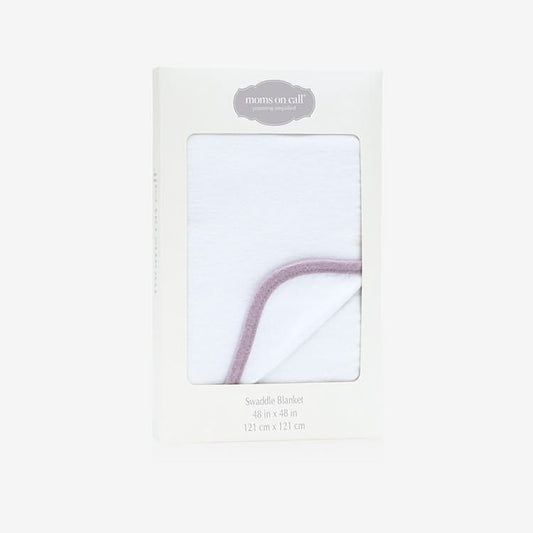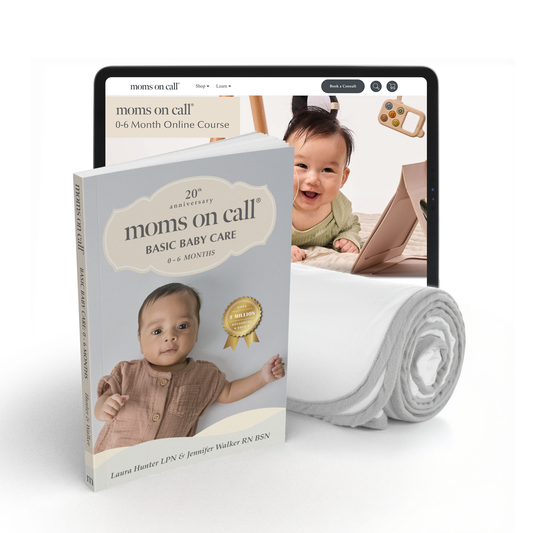Hey there, amazing moms! We're thrilled to team up with Moms on Call to be your go to source of information for postpartum prep! At Empower Physical Therapy and Wellness, we're all about pelvic floor, pregnancy, and postpartum care – because, we're moms too, and we get it!
We know this phase can feel like a wild roller coaster, but fear not! Our mission is to make your postpartum journey as stress-free as possible!
Ever heard of the 4th trimester? The 4th trimester is the first 12 weeks after your bundle of joy arrives. Your body's doing a marathon recovery, hormones are throwing a party, and you've got a tiny human to care for. It's a whirlwind!
And guess what? Your pelvic floor needs some TLC during this vulnerable time. So, stay with us as we spill the beans on 5 tips to prep your mind and body for your postpartum adventure!
Reconnecting to Your Breath
The 4th trimester is a remarkable chapter in a woman's journey, marked by the profound connection with your newborn. Yet, amidst the awe-inspiring moments, the challenges of caring for your baby can overshadow your own recovery from the rigors of pregnancy, labor, and delivery.
While basking in the warmth of newborn snuggles, there's a simple yet powerful act to kickstart your recovery – reconnecting to your breath through 360 breathing. Why the emphasis on breath work, you wonder?

This mindful practice offers a plethora of benefits:
- Easing the fight or flight response
- Providing a soothing respite from the stressors of new motherhood
- Fostering a holistic reconnection of your diaphragm, abdominals, paraspinals, and pelvic floor – the essence of your core
- Regulating breathing patterns for a sense of calm
- Awakening those often-neglected low abs that go dormant after delivery
- Alleviating pain and tension in your mid or low back, a common aftermath of extended periods of sitting, feeding, and nurturing your infant
- As an extra perk, it plays a pivotal role in restoring full range of motion to your pelvic floor.
Now, what exactly is 360 breathing? It transcends mere belly or chest breathing, encompassing a harmonious expansion from your rib cage down through your abdominals, low back, and into your pelvic floor. As pelvic floor PTs, we advocate for 360 breathing during the postpartum period as a beacon for optimal recovery. Delve deeper into this practice, complete with instructional videos, by exploring our blog for a revitalized postpartum journey.
Should you do Kegels?

Our pelvic floor is no lone ranger; it's a team player in an entire system of muscles and functions. Instead of isolating it with traditional kegel exercises, we prefer to try and train it in conjunction with muscles that are directly connected to it aka your diaphragm, abdominal muscles, and back muscles. All of these muscles comprise your core and movement or activation of one directly affects another.
Your pelvic floor is a silent hero, mostly working behind the scenes without you consciously telling it to contract. Remember the carefree days before kids when you never gave your pelvic floor a second thought? That's because it's designed to function seamlessly without you micromanaging it. Your pelvic floor is designed to effortlessly collaborate with your body, preventing pain or leaks when jumping or running.
But here's the catch: Kegels, while often touted, don't unleash the full potential of your pelvic floor. Strength isn't just about isolated contractions; it's about embracing the entire range of motion. Just as a stiff neck leads to headaches, a rigid pelvic floor can contribute to various discomforts – from painful sex to low back pain.
So, what's the key to restoring the dynamic flexibility of your pelvic floor? That answer is different for everyone but ultimately we recommend 360 breath work, single leg balance and reactive strength over kegels.
Setting Up Your Home for Postpartum Comfort and Success

When preparing your home for the arrival of your little one, the spotlight often shines on baby-centric decor. But let's be real – the baby won't be critiquing the nursery aesthetic. Who will? You guessed it – YOU! Your haven should be calming, comfortable, and a strategic setup for your success as a new mom.
Our top tip: Personalize your nursery with your needs in mind. Planning to nurse? Ensure a visible clock from your chair. When choosing a rocker, go beyond aesthetics. Does it offer lumbar and neck support? Can it recline seamlessly for your comfort without waking the baby? And hey, cup holder or charger hookup? Opt for what suits your lifestyle – cute is good, but functionality reigns supreme in the realm of rockers, gliders, and recliners.
Ergonomics matter, especially in the diaper-changing domain. Select a dresser at waist height to save your back from unnecessary bending – you'll thank us during those countless diaper changes.
Now, let's talk convenience. Create pumping/feeding stations on every level of your home. Picture this: You're on the couch, no back support, water teasingly out of reach. Avoid this scenario by having setups on each floor. For those precious nursing moments, be prepared beforehand. Have snacks, water, wipes, and nursing tools like a nipple shield, boppy, or my breast friend easily accessible on every level. Because once you've got that perfect latch, you won't want to disturb it for anything. So, set up your comfort zone before you settle your baby in, and let the nesting begin!
Reconnecting to Your Core
There's no ticking clock when it comes to reigniting your core post-baby. Whether you're ready for gentle core engagement at 2 weeks postpartum or still navigating the new mom role at that point, here's the key: You don't have to wait until the typical 6-week medical clearance to kickstart breathwork and rehabilitative core exercises.
Just as you wouldn't leap into a 5K right after knee surgery, postpartum recovery deserves a thoughtful process. Think of it as a journey guided by skilled physical therapy. As your body recovers from the orthopedic changes brought on by childbirth, it merits care and expert guidance.
Consider scheduling a visit with a pelvic floor physical therapist specializing in postpartum care soon after giving birth. With their guidance, you can embark on reconnecting to your core through breathwork, laying the foundation for a robust recovery before diving back into full-fledged exercise. This proactive approach sets you up for long-term success and could potentially ward off pelvic floor dysfunction.
Postpartum is a challenging chapter, with your mind and body navigating a whirlwind of changes. Your brain literally detaches from your core during this period, adapting and firing in new ways for survival. Unfortunately, this adaptation can hinder your reconnection to the deep core, leading to issues like low back pain, tightness, lower abdominal pooching, and pelvic floor dysfunction.
In the early postpartum days, consider incorporating a log roll for bed transitions. For those with a C-section, add support by pressing a pillow to your belly when coughing, sneezing, or dealing with nature's call. When you're ready, dive into full 360 breathing, using breath to locate your lower abdominals. Kickstart your core reunion with these three foundational exercises:



Are you ready to run?

One of the most common questions we receive is when a new mom can safely resume running or HIIT-style workouts. Often, women find themselves in a sea of confusion, overwhelmed and even scared about how to re-enter exercise after giving birth. That's where we step in! As pelvic floor physical therapists specializing in pregnancy and postpartum care, we're here to guide women on a safe and empowering return to exercise.
The answer varies for each individual, but there are crucial factors to consider before diving back into high-intensity workouts. First and foremost, have you reconnected to your core? Remember, your core involves the pelvic floor, abdominals, paraspinals, and diaphragm – they all need to work cohesively and gain strength before contemplating a return to any HIIT regimen. Single leg strength and control are also vital considerations. Before expecting your body to endure the rapid single leg stance required for running, you must establish single leg strength and stability. Progression from strength to jumping, and from jumping to running, is key. Once you can confidently navigate these stages, you're likely prepared to dive back into challenging workouts and gradually reintroduce running.
A helpful set of basic measures, as outlined in the article "Return to Running Postnatal – Guidelines for Medical, Health, and Fitness Professionals Managing This Population," includes tasks like single leg calf raises, single leg bridges, single leg sit-to-stand, and side lying abduction. Load testing, involving activities such as walking for 30 minutes, jogging on the spot for 1 minute, forward bounding 10 times, hopping in place 10 times, and performing the single leg running man 10 times on each side, is also recommended. While these provide initial indicators, for a comprehensive assessment, we strongly recommend consulting a pelvic floor physical therapist.
In conclusion, the postpartum phase can indeed be challenging and isolating, but it doesn't have to be. Arm yourself with research, seek support where needed, and lean on your spouse for encouragement. Most importantly, grant yourself the grace you deserve – you've got this! Your postpartum fitness journey can be a roadmap to empowerment, and we're here to guide you every step of the way.
If you have any additional questions please feel free to reach out to us through our website at Empower Physical Therapy and Wellness
via email: hello@weempowerpt.com
via phone/text: 678-413-5587
























